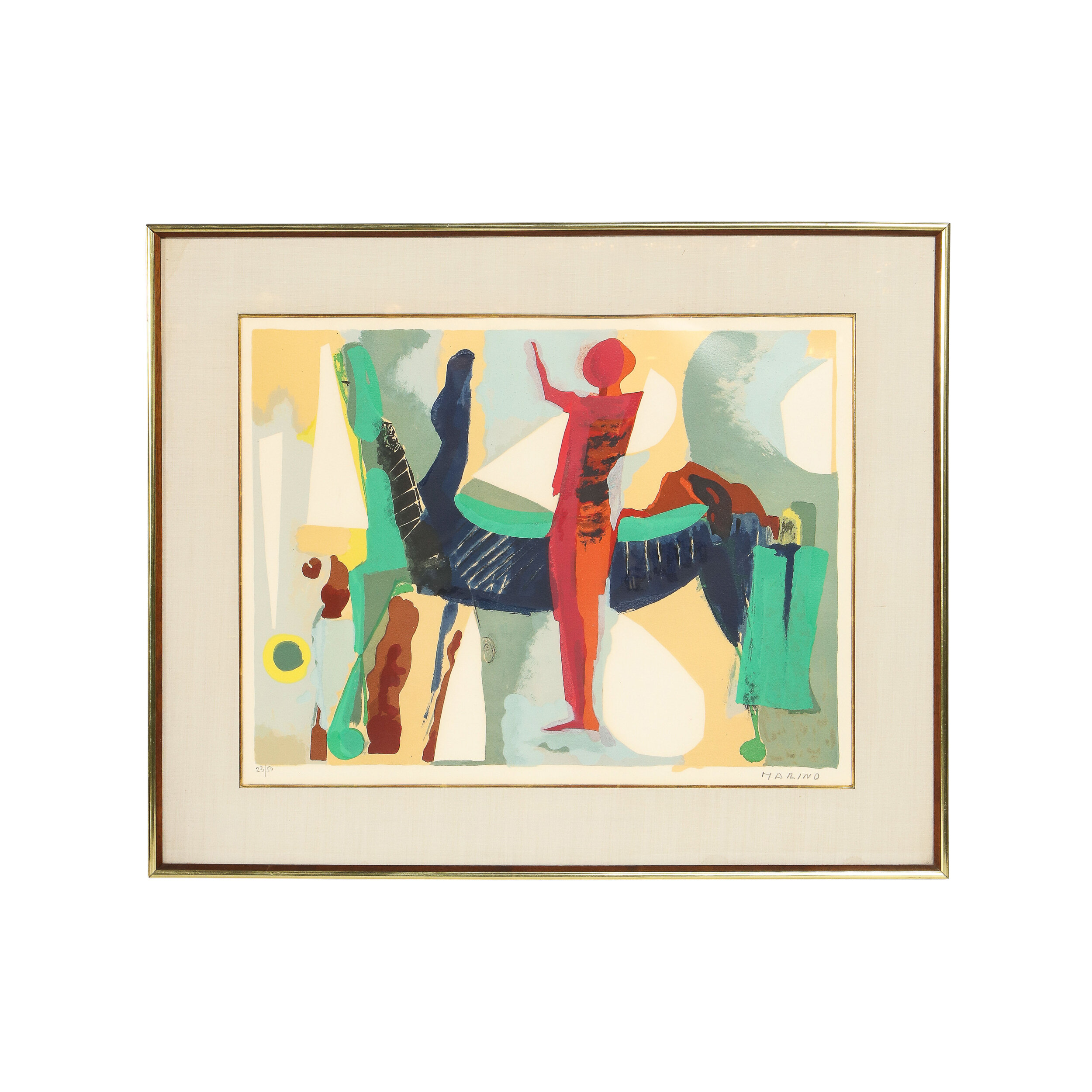MARINO MARINI
Marino Marini (1901–1980) was a renowned Italian sculptor and painter, celebrated for his evocative and symbolic works, particularly his depictions of equestrian figures and female nudes. Born in Pistoia, Italy, Marini began his formal art education at the Accademia di Belle Arti in Florence, studying painting and sculpture under influential figures such as Galileo Chini and Domenico Trentacoste. Although he initially focused on painting, by the late 1920s, Marini shifted his primary attention to sculpture, producing his first major works around 1928.
Marini’s early influences drew from the classical traditions of Etruscan and Roman sculpture, which he blended with modernist sensibilities. His works, often characterized by simplicity and bold forms, also reflected the influence of German Gothic sculpture, which imbued his figures with a sense of inner tension and raw emotion. Marini’s exploration of surface texture was innovative; he frequently used chisel work and corrosive dyes to enrich the surfaces of his sculptures, adding a layer of dynamism to his forms.
Throughout his career, Marini developed recurring themes in his work, notably his series of equestrian sculptures and Pomona figures, which symbolized fertility and the human condition. His equestrian statues evolved over time, beginning with poised, harmonious representations of horse and rider and transitioning, as World War II approached, to more dramatic depictions of riders losing control of their horses—an allegory for the chaos and uncertainty of the modern world. One of Marini’s most famous sculptures, The Angel of the City, is housed at the Peggy Guggenheim Collection in Venice and exemplifies his exploration of power, vitality, and the existential struggle.
Marini’s artistic contributions extended beyond sculpture. In addition to his three-dimensional works, he created numerous portraits, lithographs, and etchings. His portrait of composer Igor Stravinsky, crafted in 1951, is a testament to Marini’s ability to capture psychological depth and spiritual resonance in his subjects.
As an educator, Marini made significant contributions to the art world. He served as a professor of sculpture at the Scuola d’Arte di Villa Reale in Monza from 1929 to 1940, and later at the prestigious Brera Academy in Milan, where he taught from 1940 until 1970. His influence extended internationally, with exhibitions of his work held across Europe and the United States. Notably, his work was featured in the 1944 Twentieth-Century Italian Art exhibition at the Museum of Modern Art in New York, which helped solidify his global reputation.
Marini’s later years were marked by numerous accolades, including the Grand Prize for Sculpture at the Venice Biennale in 1952. His work has been exhibited in major museums worldwide, including the Tate Collection in London, the Hirshhorn Museum and Sculpture Garden in Washington, D.C., and the Galleria d’Arte Moderna in Milan, where a permanent collection of his works is housed. The Museo Marino Marini in Florence is also dedicated to preserving his legacy.
Marino Marini passed away in 1980, leaving behind a body of work that continues to inspire and resonate with audiences around the world, bridging the classical and modern worlds through his unique artistic vision.
COLLECTION




